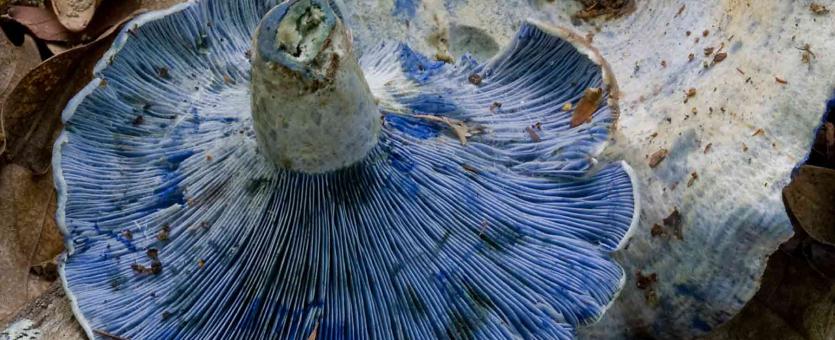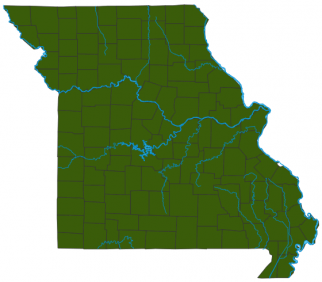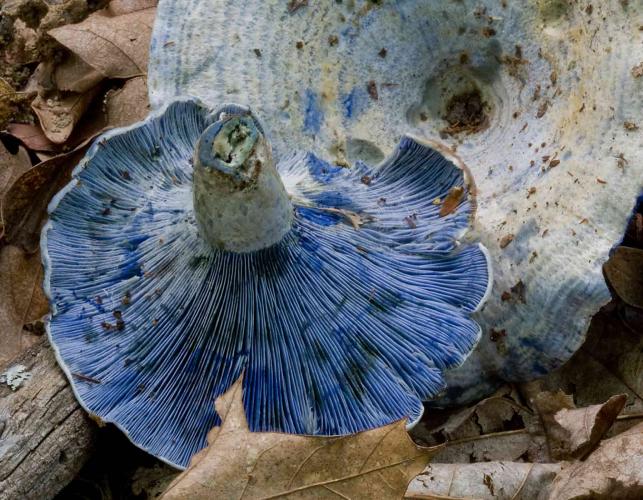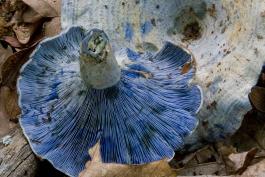
Entire mushroom bluish, bleeding blue; then greenish, bruising greenish. Grows scattered or in groups on soil in oak and pine woods. July–October. Cap convex to sunken, with inrolled margin at first ; indigo blue when fresh, fading to pale grayish blue with deep greenish bruises; texture sticky, smooth, zoned. Latex deep indigo blue, becoming dark green with exposure to air. Gills broad; spacing close; dark blue, becoming paler, staining blue-green when bruised; gills attached. Stalk often tapered toward base, becoming hollow with age; indigo to silvery blue; often pockmarked with irregular circles; texture dry. Spore print cream. Spores magnified are broadly elliptical to round, ornamented.
No lookalikes in Missouri.

Habitat and Conservation
Status
Life Cycle
Human Connections
Ecosystem Connections


Mushrooms are a lot like plants, but they lack chlorophyll and have to take nutrients from other materials. Mushrooms are neither plants nor animals. They are in a different kingdom — the fungi. Fungi include the familiar mushroom-forming species, plus the yeasts, molds, smuts, and rusts.
Always be cautious when eating edible mushrooms. Be absolutely sure of the ID, and only eat a small amount the first time you try it to avoid a reaction..





















